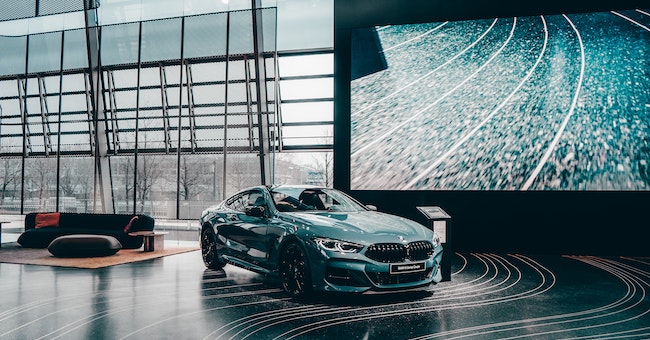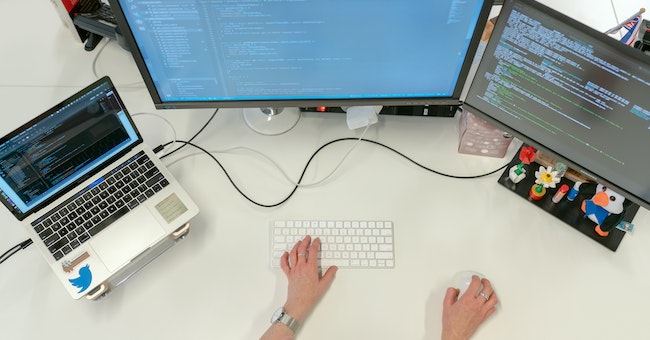Innovating the Future: Exploring the Intricacies of Automotive Design

Introduction
Automotive design is a captivating blend of creativity, engineering, and innovation that shapes the vehicles we see on the road today. This dynamic field not only influences the aesthetics of automobiles but also plays a pivotal role in enhancing safety, efficiency, and overall user experience. From the sleek curves of a sports car to the functional design of an electric vehicle, automotive design has undergone remarkable transformations over the years. In this blog post, we delve into the fascinating world of automotive design, its evolution, key principles, challenges, and the role of technology in shaping the future of mobility.
Evolution of Automotive Design
The journey of automotive design can be traced back to the late 19th century when the first automobiles took to the roads. At this nascent stage, the design was rudimentary and mainly focused on functionality and mechanical aspects. However, as the automotive industry grew, so did the emphasis on aesthetics and consumer preferences.
The early 20th century witnessed the emergence of iconic automobile designs, often characterized by elegant curves, luxurious materials, and a sense of artistry. The streamlined designs of the 1930s set the tone for future automotive aesthetics. As technological advancements allowed for greater innovation, the post-war period saw a focus on performance, speed, and aerodynamics, giving rise to the era of muscle cars and sports cars.
In recent decades, automotive design has experienced a paradigm shift towards sustainability and efficiency. The rise of electric vehicles (EVs) has prompted designers to re-imagine vehicle forms, incorporating aerodynamics, lightweight materials, and innovative energy-efficient features. This transition also emphasizes the importance of creating visually striking designs that resonate with consumers while aligning with environmental goals.
Principles of Automotive Design
Form Follows Function: This principle, often attributed to modernist architect Louis Sullivan, holds true in automotive design. The design of a vehicle should align with its intended purpose, from passenger comfort to efficient aerodynamics.
Aesthetics and Identity: Vehicles are more than just modes of transportation; they are extensions of personal identity and brand representation. Automotive design incorporates unique visual elements that distinguish one brand from another.
Ergonomics and User Experience: Interior design plays a crucial role in enhancing user comfort and experience. Intuitive placement of controls, visibility, and seating ergonomics are essential aspects of automotive design.
Safety and Structural Integrity: Modern automotive design places a strong emphasis on safety. Crumple zones, airbags, and structural integrity are integrated into the design to minimize injury during accidents.
Innovation and Sustainability: With the shift towards EVs and sustainable mobility, innovation in battery placement, energy efficiency, and recyclable materials is pivotal in automotive design.
Challenges in Automotive Design
Regulatory Compliance: Stricter regulations for emissions, safety, and efficiency require designers to find creative solutions that meet these standards while preserving the vehicle's aesthetics.
Balancing Aesthetics and Functionality: The challenge lies in harmonizing visual appeal with practical requirements such as aerodynamics, interior space, and performance.
Electrification Transition: The shift to electric vehicles demands designers to reimagine vehicle architecture and aesthetics to accommodate battery placement and maintain brand identity.
User Experience in Autonomous Vehicles: As self-driving technology advances, designers must focus on creating interior spaces that cater to passenger comfort, interaction, and relaxation.
Technology's Role in Future Automotive Design
The automotive industry is witnessing a technological revolution that is reshaping the design landscape:
Digital Prototyping and Simulation: Advanced software allows designers to create digital prototypes, simulating vehicle behavior, aerodynamics, and safety features before physical manufacturing.
Virtual Reality (VR) and Augmented Reality (AR): These technologies enable designers to visualize and iterate on concepts in immersive environments, enhancing collaboration and decision-making.
Additive Manufacturing: 3D printing allows designers to create intricate and lightweight components, enabling greater flexibility in design while reducing production costs.
Connected Vehicle Design: With the rise of connected vehicles, designers must incorporate interfaces, displays, and controls that enhance the user's digital experience.
Autonomous Vehicle Integration: As autonomous vehicles become a reality, interiors will evolve to focus on passenger comfort, safety, and adaptable seating arrangements.
Recommended Online Resources for Automotive Design
ONLINE CAR DESIGN COURSE - All you need to sketch like PRO! + 10K Celebration
Unlock your inner car designer with our comprehensive Online Car Design Course! Learn to sketch like a professional and master the art of automotive design. This course is your gateway to creating stunning car designs with confidence. Covering vital topics such as proportions, perspective, creativity, line weight, and more, you'll gain the skills to produce captivating car sketches. As a special celebration for reaching 10K followers, the course is now available at a discounted rate.
Course highlights:
Professional Skills: Learn to sketch like a pro car designer.
Comprehensive Topics: Cover proportions, perspective, creativity, line weight, and more.
Bonus Offerings: Access free Car Design 101, Photoshop brushes, Photoshop, and Blender 3D courses.
Hands-On Practice: Enhance skills with practice files and expert guidance.
Celebratory Discount: Enroll and save with our 10K followers celebration offer.
Becoming A Professional Car Designer In 2021
Embark on a transformative journey with our course, "Becoming A Professional Car Designer In 2021." Led by renowned supercar designer, Frank Stephenson, this course offers a deep dive into the automotive design industry. Gain invaluable insights and insider tips on becoming a successful car designer. Drawing from his extensive experience, Frank Stephenson shares the keys to breaking into the design world, exploring the future of design, and honing the skills required to excel. Archival footage from the documentary 'Chasing Perfect' enhances the learning experience. By course end, you'll possess a comprehensive understanding of automotive design and the path to becoming a professional car designer.
Course highlights:
Industry Insights: Explore the automotive design industry's landscape and trends.
Expert Guidance: Learn from acclaimed car designer Frank Stephenson.
Break into Design: Gain insider tips on entering the design field.
Future of Design: Explore design's evolving trajectory and opportunities.
Illustrative Footage: Archive clips from 'Chasing Perfect' enhance learning.
Unlock your journey towards a rewarding career as a car designer with our course, "How to Become a Car Designer." Designed for aspiring car designers, this course offers a step-by-step roadmap to securing your first job in the industry. Gain insights on the importance of determination, hard work, and smart strategies. Access a treasure trove of resources, including online courses, a free Car Design 101 course, Photoshop brushes, Photoshop for car design, Blender 3D for car design (beginners), and exclusive access to the instructor's Instagram page for ongoing guidance. By completing this course, participants will equip themselves with the knowledge and skills essential to thriving as successful car designers.
Course highlights:
Career Roadmap: Step-by-step guide for aspiring car designers.
Work Ethic Insights: Learn to be determined, work hard, and work smart.
Comprehensive Resources: Access online courses, free Car Design 101, Photoshop, and Blender 3D courses.
Expert Guidance: Instructor's Instagram page for ongoing support.
Success Assurance: Gain skills and knowledge for a successful car design career.
FAQs
Q: What qualifications are required to become an automotive designer?A: A degree in automotive design, industrial design, transportation design, or a related field is common. Strong skills in sketching, 3D modeling, computer-aided design (CAD), and an understanding of engineering principles are essential.
Q: How has automotive design evolved over time?A: It has evolved from basic functionality to intricate aesthetics and integration of advanced technologies. Trends include aerodynamics, sustainable materials, electric vehicle design, and autonomous vehicle interiors.
Q: What role does technology play in automotive design?A: Technology revolutionizes design through digital prototyping, 3D modeling, virtual reality (VR), augmented reality (AR), and simulation software, enabling faster and more accurate design iterations.
Q: What principles guide automotive design?A: Design principles include form follows function, aesthetics, user experience, ergonomics, safety, sustainability, innovation, and brand identity.
Q: How do electric vehicles impact automotive design?A: Electric vehicles require innovative designs to accommodate batteries, optimize aerodynamics, and create unique interiors due to the absence of a traditional engine.
Q: How do autonomous vehicles influence design?A: Autonomous vehicles shift focus to interiors, creating mobile spaces for work and leisure. Safety features and human-machine interfaces become paramount.
Q: How can one stay updated with the latest automotive design trends?A: Attend industry events, read design publications, follow automotive designers on social media, and enroll in design courses and workshops.
Conclusion
Automotive design is a captivating blend of artistry, engineering, and innovation. From its humble beginnings to the modern era of electric and autonomous vehicles, automotive design has constantly evolved to reflect changing technologies, consumer preferences, and sustainability goals. As we navigate the future of mobility, automotive designers are tasked with finding creative solutions that balance aesthetics, functionality, safety, and environmental responsibility. The convergence of technology, environmental consciousness, and user experience is shaping the future of automotive design, paving the way for innovative and transformative vehicles that are as visually stunning as they are practical and efficient.





